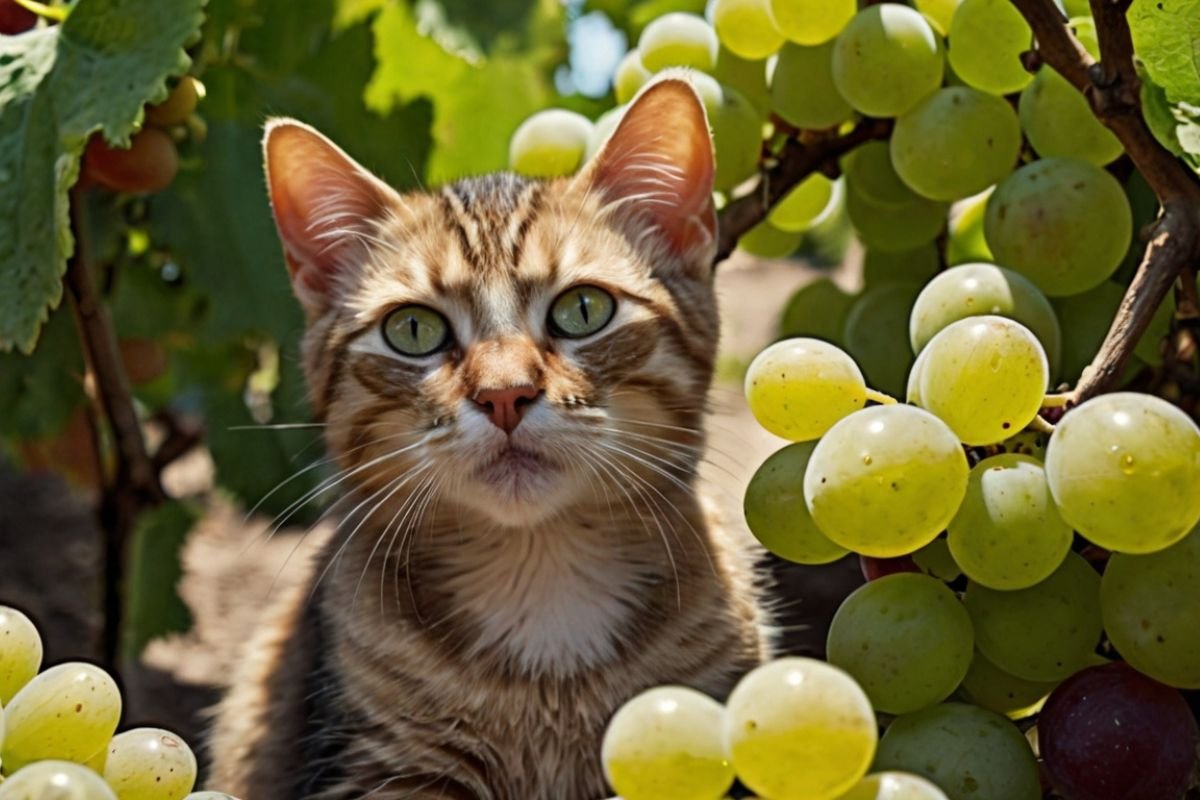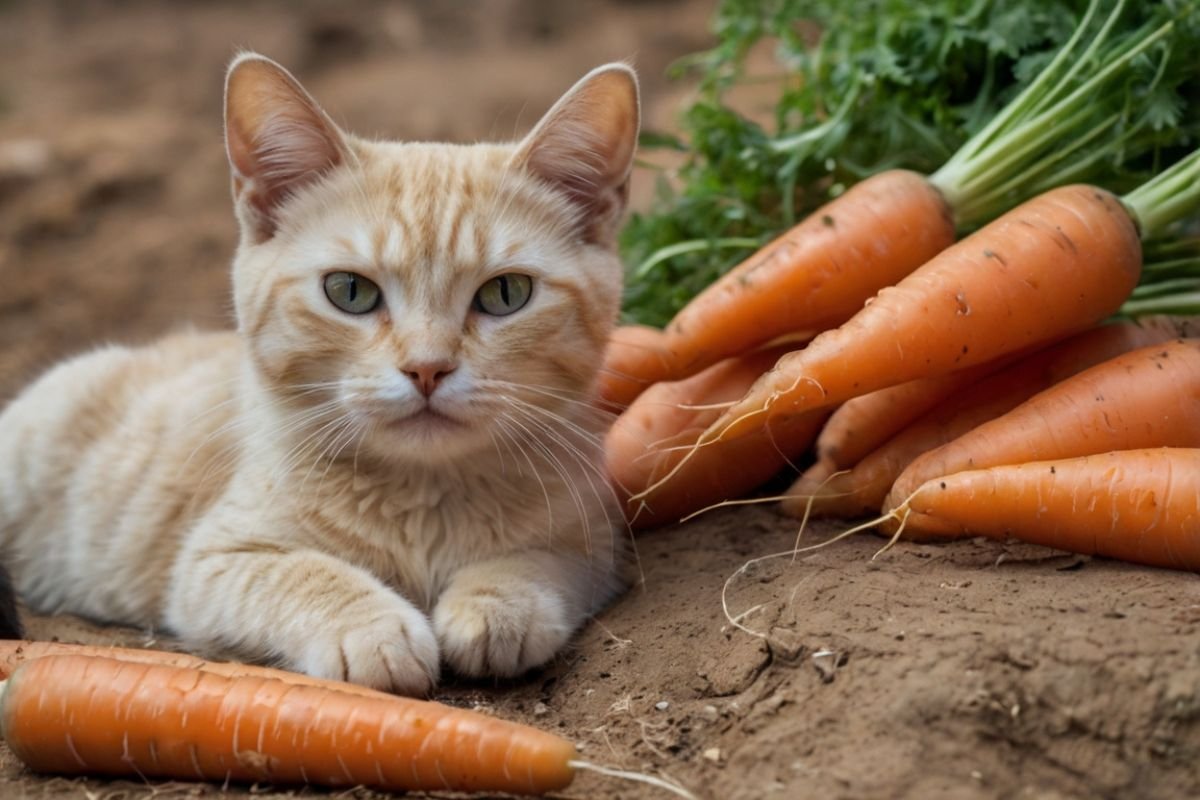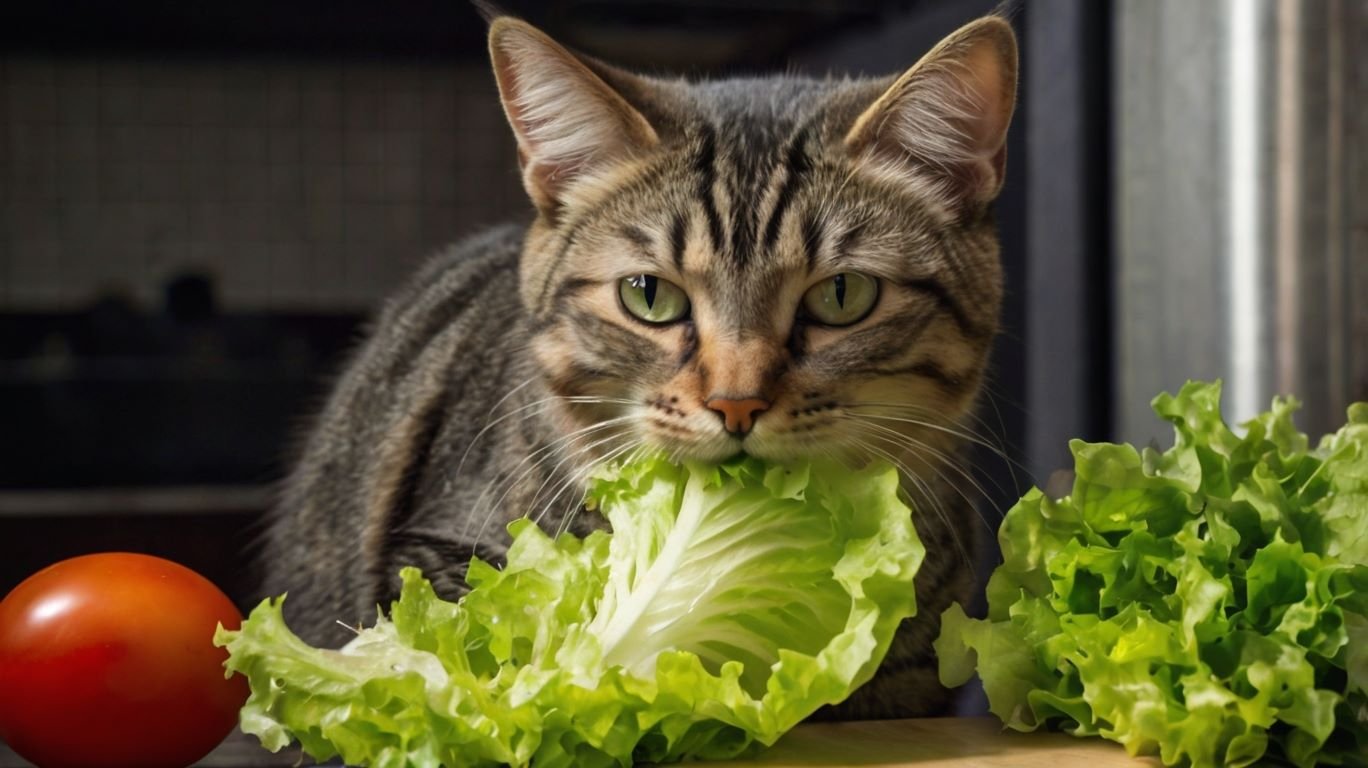I’ll never forget the first time my orange tabby Rio stared at my celery stick. There I was, trying to eat healthy. And there he was, giving me those big amber eyes. You know the look I’m talking about. That “Please, can I have some?” expression that melts your heart.
As a cat parent, these moments happen all the time. We want to share everything with our furry babies. But then worry kicks in. Is this safe? Will it hurt them? Should I give in to those adorable pleading eyes?
Today, I want to share what I’ve learned about cats and celery. Not just the boring facts, but real experiences from a fellow cat parent. Because let’s be honest – we all want to spoil our cats safely.
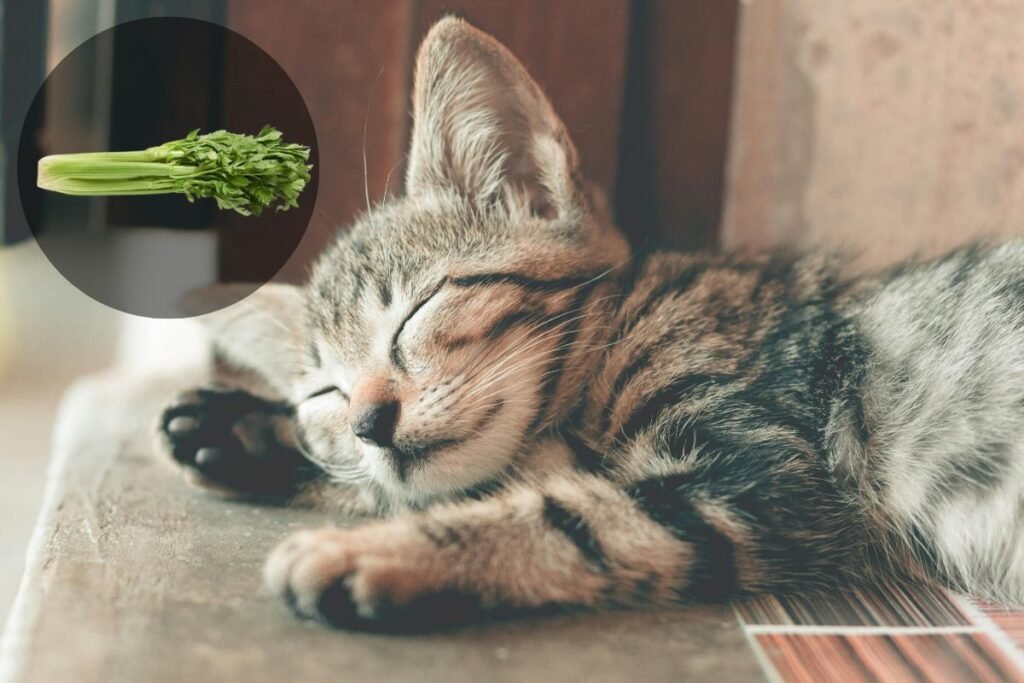
Table of Contents
The Truth About Cats and Celery
Here’s what I wish someone had told me years ago. Yes, cats can eat celery. But honestly? They probably don’t want to. And you probably don’t need to worry about it.
I’ve been a cat parent for over a decade now. I’ve made mistakes. I’ve panicked over nothing. And I’ve learned that most of our fears about food are bigger than they need to be. But some caution is still smart.
Celery won’t poison your cat. That’s the good news. But it’s not going to make them healthier either. Think of it like this – it’s not harmful, but it’s not helpful.
Also read, Can Cats Eat Meat?
Why I Stopped Worrying About Plant Foods
When Rio was a kitten, I stressed about everything. Every little thing he showed interest in sent me into research mode. I’d spend hours reading about foods, plants, and household items.
Then my vet gave me some perspective. She said something that changed how I think about cat nutrition. “Cats are simple,” she told me. “They need meat. Everything else is just extra.”
That doesn’t mean we should ignore food safety. But it does mean we can relax a little. Our cats aren’t going to waste away because we don’t share our vegetables.
What Happened When Rio Actually Ate Celery
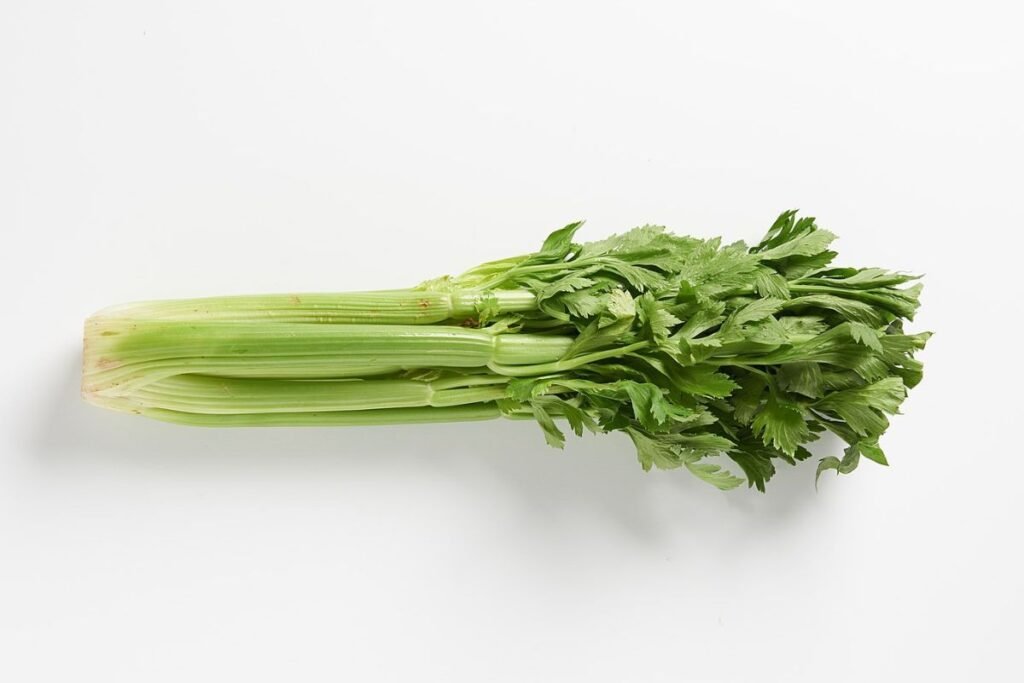
Last summer, I learned this lesson the hard way. I was making tuna salad for lunch. I had celery, onions, and all sorts of things on the counter. Rio jumped up and grabbed a piece of celery before I could stop him.
My heart nearly stopped. Not because celery is dangerous, but because I’m a worrier. I watched him like a hawk for the next few hours. You know what happened? Nothing. Absolutely nothing.
He chewed it for maybe thirty seconds. Then he got bored and walked away. I found the soggy piece under the coffee table later. It was like he was saying, “Thanks, but no thanks.”
That day taught me something important. Cats usually know what they want. And mostly, they want meat.
Understanding Your Cat’s Real Needs
After two years with Rio, I’ve learned to read his signals. When he begs for my food, he’s usually not really hungry. He just wants attention. Or he smells something interesting.
Cats are curious creatures. They investigate everything with their noses and mouths. But investigating doesn’t mean they want to eat it. Sometimes they’re just being cats.
Rio will sniff my morning coffee. He’ll lick my ice cream bowl. He’ll even try to steal French fries. But when I offer him cat-appropriate treats? That’s when his eyes really light up.
The Real Risks I’ve Learned About
Through my journey as a cat parent, I’ve discovered what actually matters. It’s not about perfect nutrition from every snack. It’s about avoiding real dangers.
Celery can be stringy. Those tough fibers might cause choking. I’ve seen Rio struggle with long grass he’s eaten outside. So if you do share celery, make it tiny pieces. Really tiny.
Some cats have sensitive stomachs. Rio doesn’t, thankfully. But my friend’s cat Sophie gets sick from any new food. Know your cat’s limits. Start small if you’re trying anything new.
The biggest lesson? Most cats just aren’t interested in vegetables. So don’t force it. There are better ways to bond with your furry friend.
What I Do Instead of Sharing Human Food
These days, I have a different approach. When Rio gives me those pleading eyes, I redirect him to something better. I keep special cat treats in the kitchen. When he begs for my food, he gets his own special snack.
This works so much better. He gets something delicious and safe. I don’t have to worry about ingredients. And honestly? He’s way more excited about his treats than he ever was about my celery.
I also learned to involve him in meal prep differently. He loves to supervise while I cook. I’ll give him a small piece of plain chicken while I’m preparing dinner. He feels included, and I feel good about what I’m sharing.
My Honest Take on Cat Nutrition
After years of overthinking every food choice, I’ve simplified my approach. I buy high-quality cat food. I stick to cat-specific treats. And I don’t stress about the occasional human food incident.
Here’s what I’ve learned really matters. Cats need protein from meat. They need fresh water. They need consistency in their diet. Everything else is just details.
That doesn’t mean I’m careless. I still research new foods. I still keep dangerous things away from Rio. But I don’t panic when he licks my plate or steals a crumb.
When to Actually Worry
In my experience, there are real red flags to watch for. If your cat eats something and then acts sick, that’s concerning. Vomiting, diarrhea, or lethargy after eating new food needs attention.
But a cat who sniffs your celery and walks away? That’s normal. A cat who takes a small bite and loses interest? Also normal. Cats are pretty good at self-regulating.
I’ve called my vet exactly twice in Rio’s life for food-related concerns. Both times, she told me to relax and watch him. Both times, he was fine within hours.
Trust your instincts as a pet parent. If something feels wrong, call your vet. But don’t create problems where none exist.
The Foods I Actually Worry About
Through my cat parenting journey, I’ve learned which foods are truly dangerous. Chocolate, grapes, onions, and garlic top my list. These can seriously harm cats.
But celery? It’s just not on that list. Neither are most common vegetables. The worst thing that happens with celery is usually nothing. Or maybe a little stomach upset.
I keep a list of truly toxic foods on my fridge. It helps me stay focused on real dangers instead of imaginary ones. And it gives me peace of mind when Rio gets into something harmless.
Building Better Habits
These days, I’m more intentional about treating Rio. Instead of sharing whatever I’m eating, I plan special moments for him. Maybe it’s a small piece of cooked chicken after dinner. Or a special treat during our evening routine.
This approach works better for both of us. Rio gets consistent, safe treats. I get to spoil him without worry. And we both enjoy the bonding time more.
I also learned to cat-proof my kitchen better. Not because everything is dangerous, but because it’s easier to prevent issues than deal with them. Rio can’t steal celery if it’s put away properly.
What I Tell Other Cat Parents
When friends ask me about sharing food with their cats, I always say the same thing. Start with what you know is safe. Stick to cat-specific products most of the time. And don’t stress about the occasional human food incident.
Every cat is different. Rio is adventurous but has a strong stomach. Your cat might be more cautious or more sensitive. Learn your cat’s personality and limits.
The goal isn’t perfect nutrition from every bite. It’s providing a loving, safe environment where your cat can thrive. Sometimes that means sharing a tiny piece of chicken. Sometimes it means saying no to the begging eyes.
My Current Approach with Rio
Now that Rio is two years old, we have a good routine. He gets high-quality cat food twice a day. He gets approved treats during training sessions. And occasionally, he gets a small piece of something special.
I no longer panic when he shows interest in human food. But I also don’t automatically share everything. I’ve learned to read his signals better. And I’ve learned to trust my judgment as his caretaker.
The celery question rarely comes up anymore. Not because I avoid it, but because Rio has shown me what he really wants. And it’s usually not vegetables.
Practical Tips from My Experience
If you’re still worried about the celery situation, here’s what I’d do. First, don’t panic if your cat already ate some. Watch them for any unusual symptoms. Most likely, nothing will happen.
If you want to share celery safely, make it tiny pieces. Remove all the stringy parts. And don’t be surprised if your cat isn’t interested. Most cats prefer meat-based treats anyway.
Consider this a learning opportunity. Use it to research truly dangerous foods. Set up better food storage habits. And maybe invest in some high-quality cat treats for future begging sessions.
The Bigger Picture
After all my worrying and research, here’s what I really learned. Being a good cat parent isn’t about perfection. It’s about love, attention, and making reasonable choices.
Rio doesn’t need celery to be healthy. He doesn’t need to share every meal with me. What he needs is consistent care, safe food, and lots of love. And honestly? He’s getting all of that without any vegetables.
Your cat probably needs the same things. Good food, fresh water, medical care, and affection. The celery question is really just a small part of the bigger picture.
Why I’m Sharing This Story
I wanted to write this because I remember being a new cat parent. I remember the anxiety about every little thing. I remember reading conflicting advice online and feeling more confused than before.
What I wish I’d had was honest perspective from another cat parent. Someone who’d been through the worrying and come out the other side. Someone who could say, “I’ve been there, and it’s going to be okay.”
That’s what I’m trying to give you today. Real experience from someone who loves their cat just as much as you love yours. Someone who’s made mistakes and learned from them.
Moving Forward with Confidence
These days, I’m much more confident as Rio’s caretaker. I know when to worry and when to relax. I know what questions to ask my vet and what issues to handle myself.
The celery question taught me to focus on what really matters. Good basic care beats perfect nutrition from every snack. Love and attention matter more than sharing every meal.
Your cat doesn’t need celery to be happy. But they do need a confident, caring parent. Someone who can make good decisions without overthinking every choice.
Final Thoughts from One Cat Parent to Another
If your cat ate some celery, they’ll probably be fine. If they’re begging for your celery stick, they probably don’t really want it. And if you’re worried about their nutrition, focus on high-quality cat food instead.
Being a cat parent means making lots of small decisions every day. Some matter more than others. The celery question? It’s one of the smaller ones.
What matters more is the love you’re showing by asking the question. That concern for your cat’s wellbeing is what makes you a good pet parent. Trust yourself, stay informed, and enjoy the journey.
Rio and I have learned so much together over these two years. About food, about health, and about the bond between cats and their humans. I hope sharing our story helps you feel more confident in your own cat parenting journey.
Remember, every cat is unique. What works for Rio might not work for your cat. But the love and care you’re putting into the question? That’s universal. That’s what makes all the difference.

Shahriar Robin is the creator of WhatPetsCanEat.com, a passionate pet lover and dedicated cat dad to Rio, a curious two-year-old orange feline who inspired this website. With a love for animals and a knack for research, Shahriar shares trusted, easy-to-understand information to help fellow pet owners make safe, healthy food choices for their furry friends.
